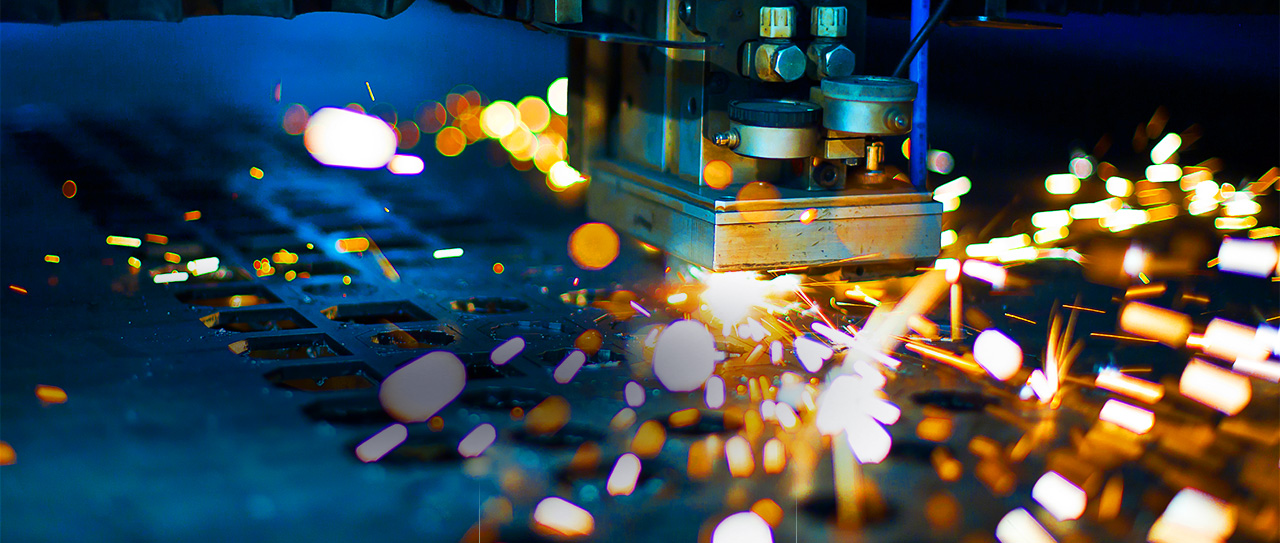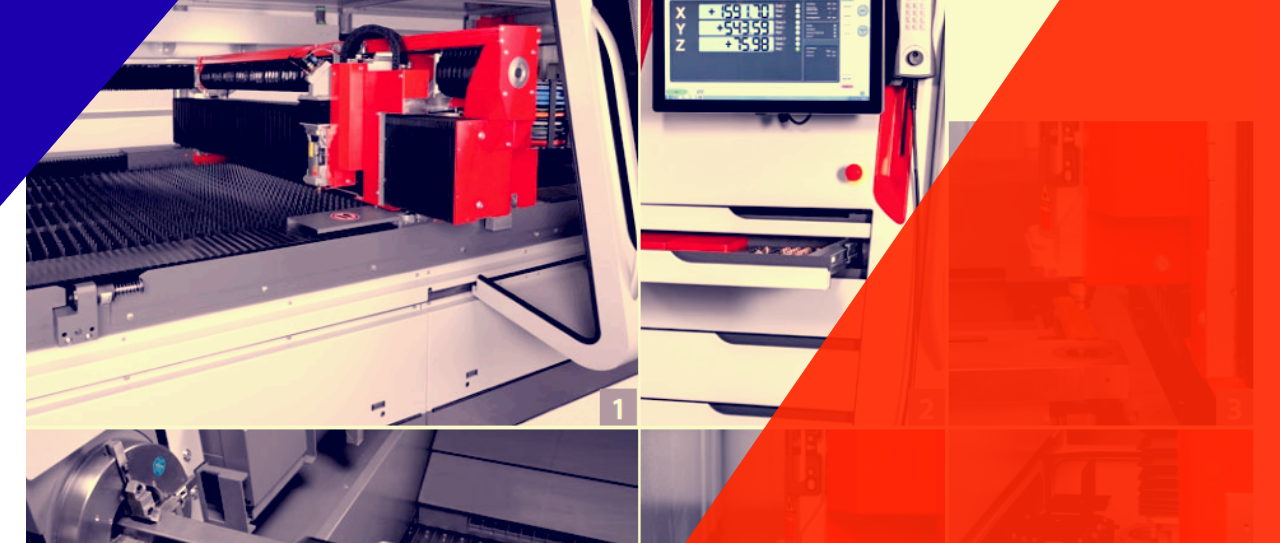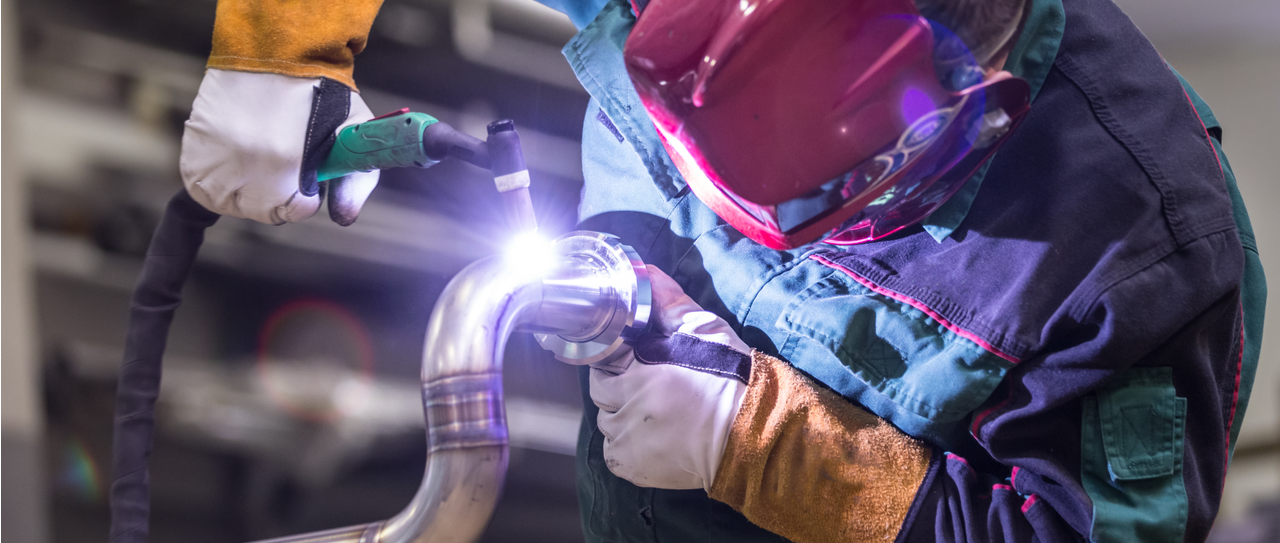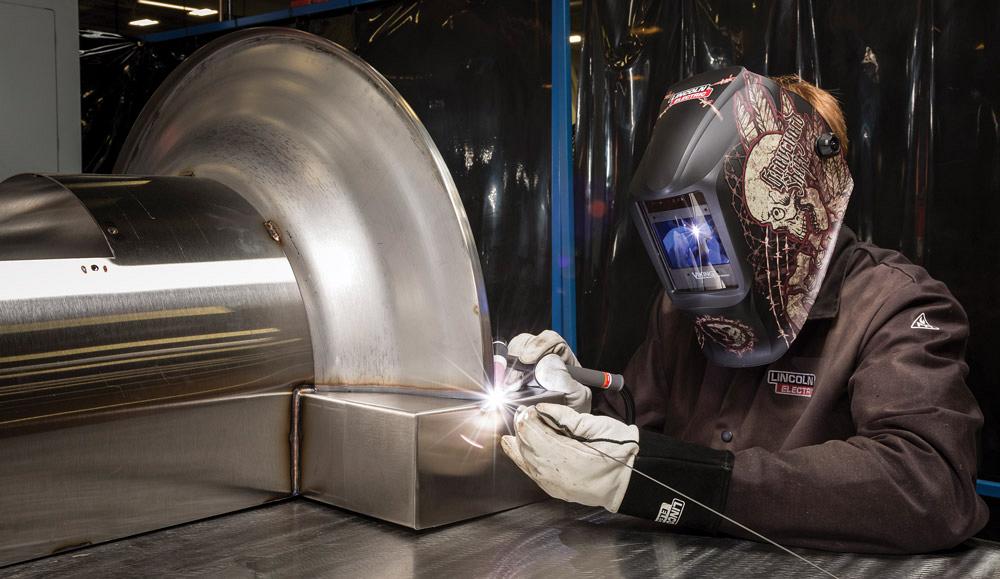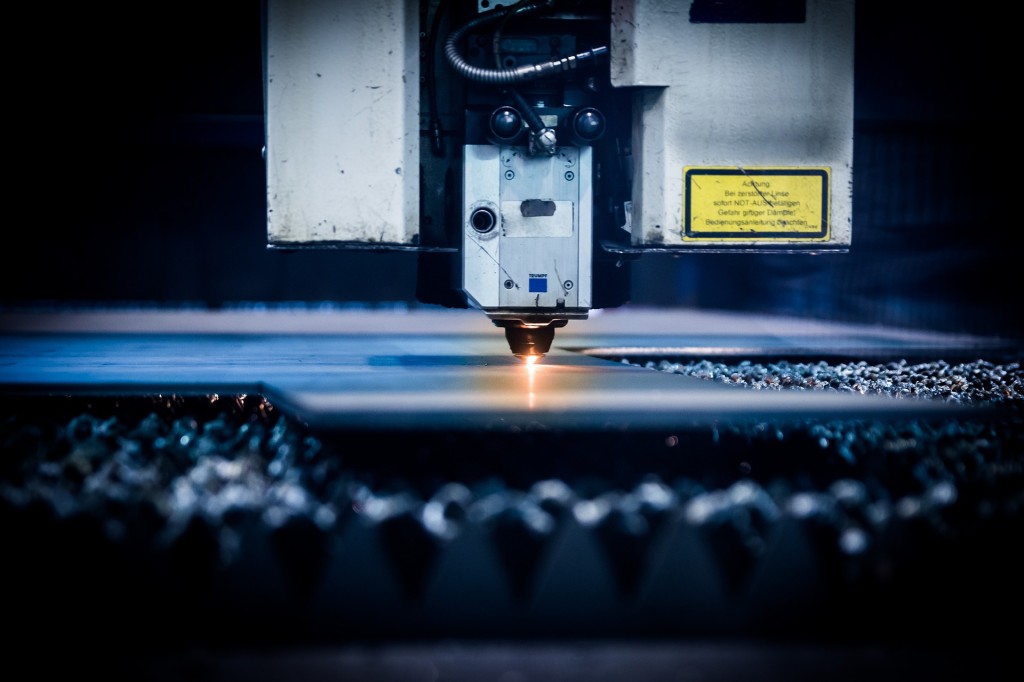Ergonomics is considered as a nice-thing-to-do in the USA for a long time. But countries in EU, Canada, Australia and few other countries have made ergonomics a law that is a must to abide by. In those countries, the offending business must pay the fine if they do not adhere to the rules, guidelines, and standards. Although Ergonomics in countries like the USA, Singapore, Thailand, India, is still voluntary, nowadays it is not only a nice-thing-to-do. Instead, it has become a must-to-do for metal fabrication industry.
As with most of the business-related decisions, installments of ergonomic machinery and tools come down to the figures and number. Although installing ergonomic equipment costs a lot of money but that doesn’t compare to the cost of accidents and injuries, as well as the compensation for the worker’s medical expenses. Also, the loss of productivity will add to the costs of an accident or injury of your employee.
Apart from saving the expenses that I just mentioned, ergonomic tools and machinery will also increase productivity by reducing wasted movements that consist of lean manufacturing.
Accidents and Injuries Cost Money
MMH or Manual Material Handling injury continues to lead employees’ compensation claims and all their associated expenses according to 2017s Work-place Safety Index, made by the Liberty Mutual Institute for Safety.
The expense of lost-time injury varies, but on average, it is $25000 for each incident. So by preventing one single lost-time injury can definitely save you more than what you would spend on ergonomic equipment.
This particular problem is spreading and it isn’t confined to any single sector. But the industrial workplace report indicates a high amount of MMH lost-time accidents and the employees’ compensation claims, showed by the US Department of Labor.
Sometimes these MMH accidents and injuries are incorporated with the poor ergonomics of laser cutting machine, metal bending machine or any other metal fabrication related equipment. The poorly designed workplace and inappropriate manually-handled machines can put your employees at risk. This results in a loss of productivity, lack of quality in production, lost work hours, massive medical cost including compensating claims.
A lot of those claims are results of the accumulated traumas, not any single accident. This includes sprains, tendonitis, strains, and even back pain. This type of injuries usually derives from repeated or excessive stress on the hands, ankles, wrists, elbows, shoulders, and back.
For example, heavy objects should not be lifted from a low angle like the pallet or the floor, bending over in the containers, wire baskets, tubs, etc. should be reduced.
Better Ergonomics Increases Productivity
A well-trained, dependable, productive, creative worker is a standout amongst the most important resources a Metal Fabrication company has. At the point when a worker is missing, notwithstanding for transient damage, the special abilities he or she has created are not supplanted by an alternative. Quality, productivity, and efficiency would all be able to endure. These indirect expenses can without much of a stretch surpass all medicinal expenses.
Often the ergonomics upgrades come in form of a simple upgrade. These could include versatile, easy access machines that help your employees to get rid uncomfortable working positions and reduce bending, lifting, and reaching.
So before the medical expenses and loss of productivity pile up on your annual revenue, it’s time to adopt ergonomic equipment for laser cutting, metal bending, metal rolling, and all other Stainless Steel fabrication, Aluminium fabrication or Steel fabrication related works for the best long-term outcome.
“We’re going to build our steel and aluminum industry back,” Trump said.
Demonstrating what he said, United States President Donald Trump recently stated that he would impose massive tariffs on imported steel and aluminum, while Canada and Mexico, being the primary trading partner of US, will be devoid of new tariff rules on national security ground.
An investigation by the Secretary of Commerce suggested that steel imports threaten to hinder the national security and hence recommended to impose tariffs.
Stocks of domestic steel and aluminum producers in the US brushed up immediately after the news. Tariffs may profit US steel and aluminum makers, yet other nation might strike back in response and possibly raise the expenses for American shoppers. While the Pentagon stated that the US only imports about 3% of total steel it uses and hence it is likely to have no risks involved.
Some metal fabricators may have given thumbs up to the judgment, but some economists believe that tariffs would be a big blow to the employment. Majority of Fabricating related associations have opposed the idea of the tariff. According to them, steel may or may not have been purchased domestically, but tariffs would affect the supply chain because everything revolves around the cost of a product.
According to Mark Perry, Professor at the University of Michigan, domestic steel manufacturers are at bay in comparison to the Asian manufacturers. Increased Input prices and low profit, sales and market shares will be a blow for American manufacturers.
Fabricators & Manufacturers Association, International (FMA) President and CEO Ed Youdell said, “One likely result of this action is to add headwinds to the market for American-made fabricated metal product producers. Just when this market had some sustained momentum, the specter of retaliatory duties and tariffs now hangs over this important manufacturing sector. The association is concerned that jobs and job creation are at risk; those countries affected by this announcement will likely choose to circumvent the tariffs by producing and exporting low-cost fabricated metal parts rather than exporting steel and aluminum.”
The tariffs could altogether have different monetary and political outcomes, depending on countries affected. The news walloped Asian nations like South Korea, one of the highest suppliers of steel, on the other hand, metal fabrication in Singapore and that of Malaysia’s shares rose after the tariff exemption. China, though most top exporter of steel in the world, sums to only 2.9% of steel imports in the US. To curb this loss, China can build new export markets in Asia. A source at a global trading house in Shanghai said: “We believe the fabricators can divert their exports to other Asian countries if the US situation plays out as they expect,”. A metal fabrication company in Singapore, an Aluminum trader, stated that it would be tough for China to export metal fabricated products to some Asian countries due to their import duties.
Metals are produced in excess in Asia, and hence the prices may drop due to the tariffs fiscal, which is ultimately an advantage for the customers. With the change in rate, China will have competitors like Ukraine, Russia, Turkey, Middle East etc. although the strong domestic requirement of steel will be a sign of relief for Chinese manufacturers.
Tariff on metal fabricated products might be a complicated issue, especially after 2008 financial crisis. It is worth noting how other countries and their fabricators react to it take steps to curb their export cut.
For different metal fabricators, the term “cleaning metal surfaces” has different significance. For some, the finishing of metal structures is extremely important and for some fabricator, the finishing may not be a great deal to pay attention.
That’s why the importance of metal surface cleaning is different to each. But in most cases, a quality product is something that not only has a durable construction and an efficient functionality but also a smooth finished surface to look at and feel.
This process of metal surface cleaning can be overwhelming especially for the metal fabricators which have powder coating and painting lines. This is because of the headache of pretreatment systems, which requires intense oversight that ensures the chemical creating the perfect surface for powder and paint so that they can properly adhere.
Other fabricators may do the surface with power tools and welding but they know that a clean surface requires a lot of resources. So, to make a surface perfectly smooth, a lot of resources, as well as time, is wasted. That’s why laser has been a proven an effective way to get smooth surfaces. To be honest, Laser changed the way how fabricators thought of cleaning metal surfaces.
This laser system wipes out residues, contaminants, and coatings with the help of the high-energy fiber laser source. The same type of power sources is used in laser cutting and other laser equipment in the fabrication industry. The best possible way that someone can reduce production cost is by implementing the best equipment and best process.
This process is generally meant to minimize the use of Chemical & Abrasive for cleaning the metal surfaces. The fabricator will place that part to be cleansed in the Class one enclosure and then starts the cleaning program. Once everything is set up, the machine operator will choose between a customized pattern that meat certain surface specification and a preinstalled cleaning pattern throughout the process. The machine operator can also customize the program to include different passes using different values for frequency, power, and the speed on each laser pass. He can arrange a database so that he doesn’t have to remember a metal surface cleansing job that was done previously.
Another great feat of this laser cleaning is it can clean almost any type of metal surfaces that you want, like steel, galvanized steel, stainless steel and even copper and brass. Another interesting fact about laser cleaning is it can even clean reflective surfaces like glass. Apart from metal surfaces and glass surfaces, the laser can be used to clean nonmetallic materials like rubber and plastic.
But the laser cleaning isn’t limited to the flat surfaces only. Recently, the laser is being heavily used in curved surfaces too because the cleaning units are designed in a way that can clean hard-to-reach areas of 3D objects.
Most of the laser systems have a precise cleaning head, which allows the trajectory beam to pass through a certain static path. To clean the surface, the object needs to sit in X and Y axis of the cleaning chamber and then the movements ensures that the surface is fully exposed to the laser beam. This is how you get the smooth and clean finishing to the metal surfaces.
Are you planning to design a structure with non-standard structural components? Are you in need of an experienced metal fabrication company for your big project? Need a fabrication company that can take care of drawing, designing, and manufacturing of structures and platforms and shapes your project? It’s vital you hire the right custom metal fabrication company as they are crucial to a project’s success or failure. Here are the few factors that you must consider while choosing the metal works and metal fabrication company for your project.
Local Proximity
It is not a critical factor but having a fabrication company in close local proximity has few benefits. One of the most significant benefits that geographical proximity offers is logistics. A local company is familiar with the logistics of the buildings in the area and the building codes as well. Moreover, a local company nearby will allow you to conduct project meetings with ease. For example, if your project site is based in Singapore, it would make sense to work with companies like FMB Trading and Engineering, a metal fabrication company that is familiar with the building codes and the area throughout Singapore.
Industry Experience
A little bit of homework before finalizing a metal fabricator can go a long way. Before you finalize your metal fabricator, make sure you study their portfolio and assess if they have worked on similar projects before. Each industry has its unique compliance protocols and regulation procedures. A metal fabrication company with substantial experience in industries such as chemical, biotechnology, food processing and manufacturing will be familiar with these strict guidelines and specifications. Such experience and knowledge empower them to handle the most demanding requests with ease. If the customers of these fabricators are satisfied with their services, you should definitely add them to your vendor shortlist.
Resources to Handle the Project
Gauge if the hired company is equipped with resources to support your project throughout all the phases whether its design, fabrication and steel erection. If they lack the resources to carry out all the stages, are they going to outsource any phase of the project? A metal fabricator equipped with capable internal resources can offer critical insights into any nuances that your building may offer. Assessment of the fabricator’s resources will also help you gauge their capability of completing the project promptly reducing the risk of project downtime.
Safety Standards and Protocols
A fabricator that aims to deliver quality services to their clients always follows the best-practices and the protocols that come with it. Ensuring personal safety for the employee as well as the visitors is one of the most critical safety standards that successful companies follow. The safety standards and protocols they follow will help you gauge their safety score and the quality of process and execution they implement in the project. Any company that adheres to strict employee safety will adhere to strict quality control standards as well.
Materials Used
Good metal fabricators utilize materials of the highest quality. The assessment of the grade of structural stainless steel or metal alloy vital for the completion of the project gets overlooked in the early stages while choosing between the fabrication shops. Competent metal fabrication companies ensure you understand what materials they will use for your project and why.
With a diverse experience spanning across various industries since 1992, FMB Trading and Engineering have completed and managed most complex metal fabrication projects across Singapore. We have the capable in-house teams and a treasure of resources at disposal to meet customers’ needs and offer customized fabricating services. Contact FMB Trading and Engineering to discuss the details of your next metal fabrication project in Singapore.
Structural stainless steel is one of the finest and highly sustainable building materials utilized in various industry functions. It finds application in construction, oil and gas, manufacturing, infrastructure and many more industrial sectors. This versatile metal is the preferred building material for metal fabrication specialists and metal works industries across the world. It is cost-effective and offers great mechanical functionality. This quality of structural steel makes the building process swift and simpler. So, let’s take a quick look at why structural steel is considered as a preferred material for the fabrication process in shop floors.
Strength & Durability
Structural stainless steel is tensile i.e., it has a high strength to weight ratio. It also weighs less compared to other metals used for fabrication. It’s also stronger compared to other building materials, even concrete. These attributes make it easy to work with. Its strength also makes it reliable to withstand and resist any types of disasters such as fire or storms.
Another key attribute that helps steel take precedence over other building materials is its long lifespan. The final product fabricated from structural steel is strong and capable enough to withstand any external pressure. It is capable to withstand wear and tear of all kind of weather conditions. This significantly reduces the headache of maintenance of the buildings and equipment.
Flexibility
Steel can be bent or molded into an endless number of shapes, thanks to its malleable and ductile nature. This makes it an ideal material for preparing custom designs. Structural steel, being an alloy, can be adapted to give different properties Designers can work on various designs ranging from simple to complex with ease, making it a popular choice in the construction industry. It offers designers a flexibility to make changes in the planning stages without impacting the project cost.
Speed of Construction
Structures that are fabricated from structural steel can be erected speedily. This leads to reduced construction time that is often one of the main criteria of the industries during project planning. The short construction time can lead to savings in site preliminaries, reduced project costs and ultimately, improved ROI.
Stainless steel plays a huge role in improving the productivity of construction because of shop fabrication. It enables maintenance of tight construction tolerances. Structural Steel serves as a shop based technology enhancement, thereby offering significant productivity enhancement in construction.
Welding
Welding is one of the most important parts of the metal fabrication process. With the application of the right welding techniques, the strength of structural steel can be enhanced. This makes steel a perfect material for use in high-pressure applications such as columns and I-beams of commercial buildings.
Affordability
Apart from the attributes of strength and reliability that structural steel encompasses, clients also prefer structural steel because it’s cheap compared to other raw materials. Add to this, even the overall cost of the structural steel fabrication process is cost-effective. Its lightweight also contributes to reduced shipping cost. With higher cost-savings, usage of steel offers a higher probability of improved ROI to businesses than other building materials.
Environmentally Safe
As more and more businesses are now inclined towards ‘going green’, steel has gained more popularity among businesses thanks to its sustainable and flexible nature. Steel can be used over and over without compromising on quality. Steel has limited carbon content and is recyclable. Over the years, the process of producing stainless steel in Singapore has become environmentally safe with an increased focus on higher recycle rate and reduction of waste.
With the increased use of steel for structural frames and flooring, more forests can be preserved. It is also effective in blocking out environmental pollutants, resulting in a healthier workplace or commercial space. Modern-day steel plants are designed in a manner that reduces greenhouse gas emissions and is energy-efficient. Even the water used during the manufacturing process of steel is recycled.
For more information on structural stainless steel fabrication in Singapore, get in touch with us at www.fmbtne.com.sg
We are Structural Steel Fabricators, offering metal works and stainless steel fabrication services to industries in Singapore.



